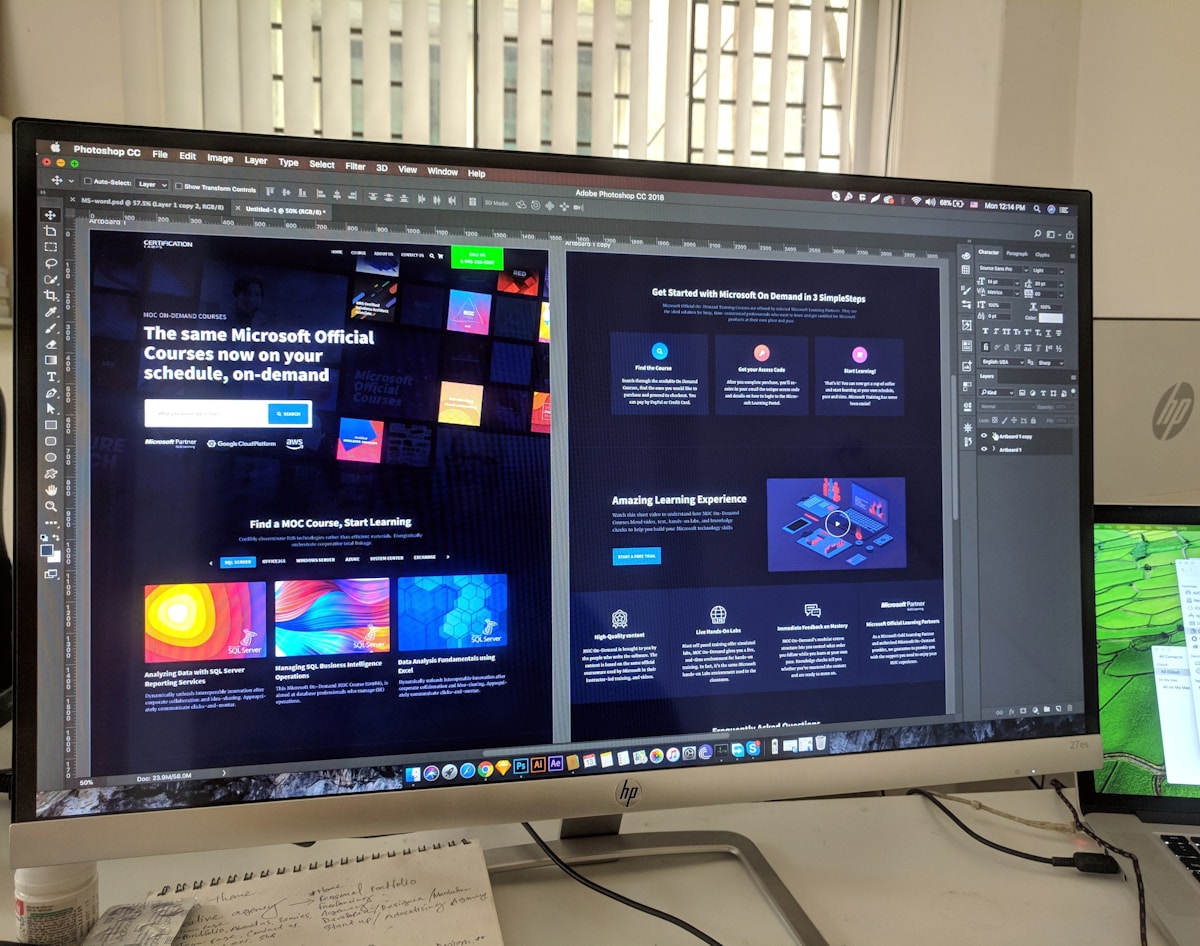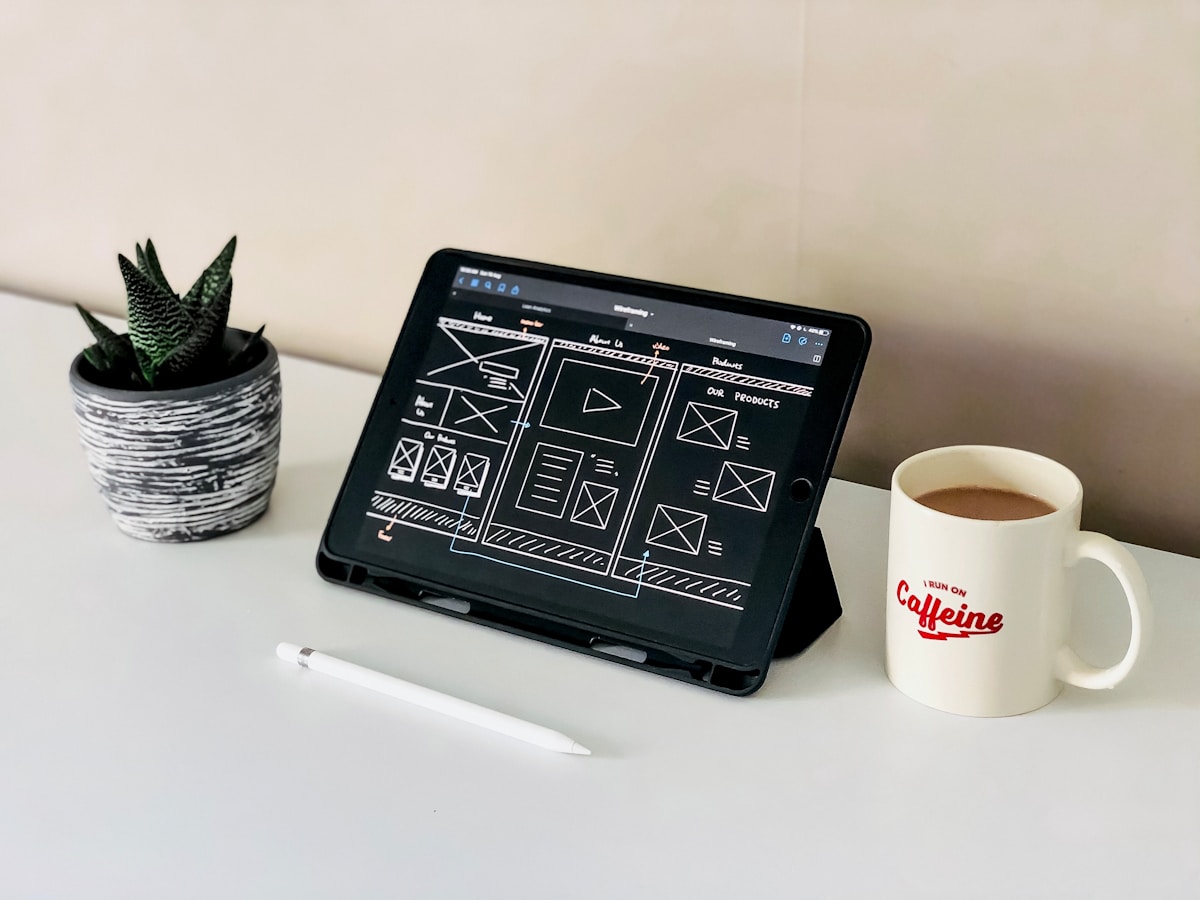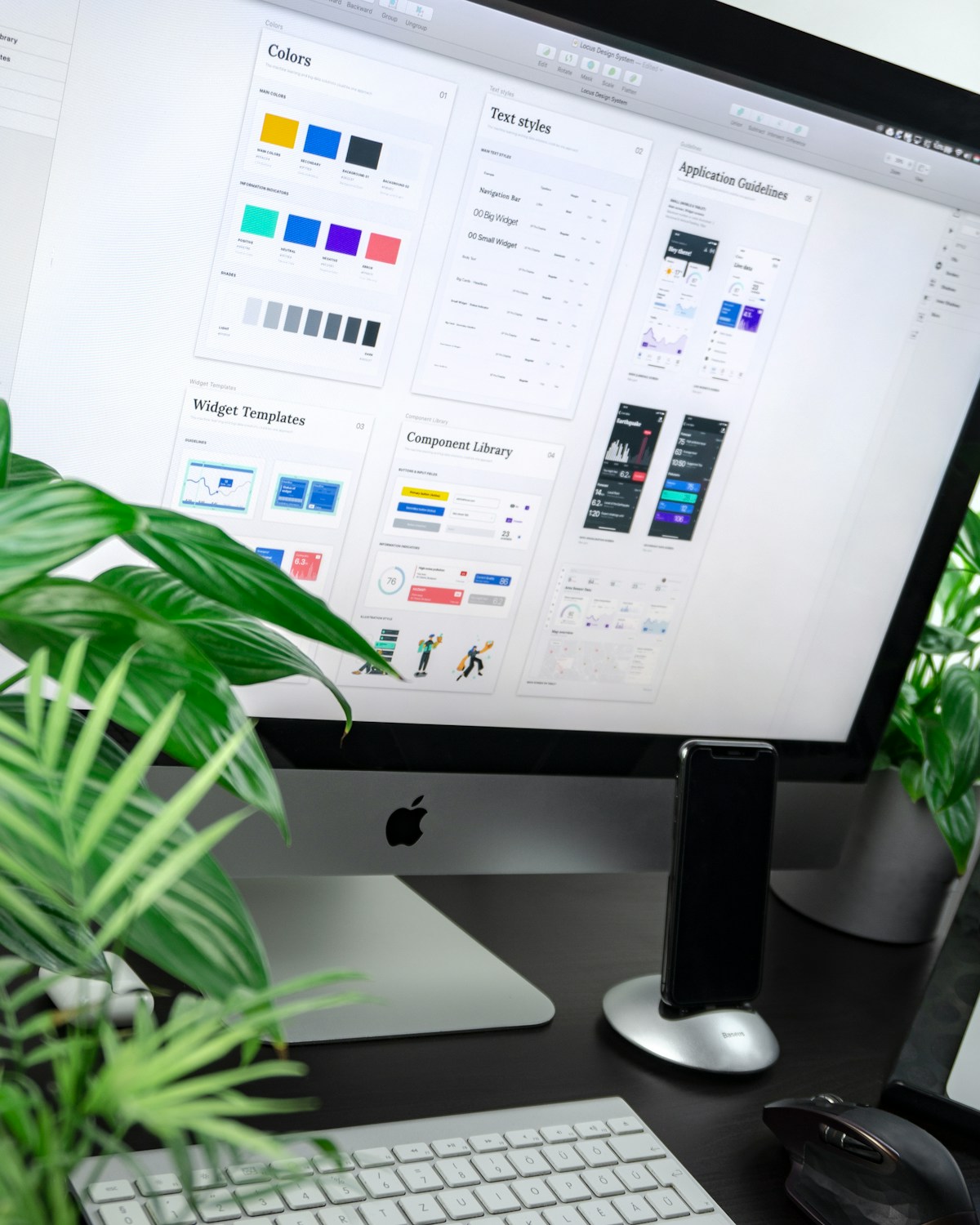Crafting Digital Masterpieces: A Journey Into Website Design Inspiration
Crafting Digital Masterpieces: A Journey Into Website Design Inspiration

In the ever-evolving world of website design inspiration, we look to the influential figures who have shaped the industry. From the bold creativity of Chip Kidd to the timeless legacy of Dieter Rams and the groundbreaking work of Paula Scher, their contributions have redefined the way we approach web design. As we delve into their unique perspectives and innovative approaches, we uncover a wealth of inspiration that continues to shape the best website design inspiration available today.
Web Inspiration - The Influence Of Chip Kidd
Chip Kidd is renowned for his bold and unconventional approach to design, pushing boundaries and challenging traditional norms. His fearless creativity has left an indelible mark on web inspiration, inspiring designers to think outside the box and create impactful digital experiences.
Kidd's innovative designs have garnered widespread acclaim and featured in numerous publications and exhibitions worldwide. His ability to blend art and functionality has solidified his reputation as a trailblazer in the design industry, continuously pushing the envelope and redefining what is possible in the digital space. As a result, he has become a sought-after speaker and mentor, sharing his expertise and inspiring the next generation of designers to embrace creativity and fearlessness in their work.
Web Inspiration - Exploring The Legacy Of Dieter Rams
Rams' emphasis on usability and clean design has shifted how websites are structured and presented. Designers now prioritize user experience, ensuring websites are easy to navigate and understand. Focusing on functionality has resulted in websites that look great and provide visitors with a seamless and enjoyable experience. As a result, Rams' principles have become foundational in web design, shaping how we interact with and consume online content.
Web Inspiration - How Paula Scher Redefined Design
Paula Scher's fearless embrace of breaking the rules and pushing boundaries has redefined what is possible in web design inspiration. Her innovative use of typography and bold visual storytelling has inspired a new generation of designers to think creatively and fearlessly in crafting their digital masterpieces.
Website Design Inspiration - The Art Of Website Design

Website design inspiration is crucial in creating a visually appealing and user-friendly website. Drawing from the legacy of design masters such as Chip Kidd, Dieter Rams, and Paula Scher can provide valuable insights into creating impactful web designs that resonate with users.
Minimalism: Less Is More
The concept of "less is more" is a fundamental principle in the art of website design, and it aligns closely with the philosophy of minimalism. Minimalist design focuses on simplicity, clarity, and removing unnecessary elements to create a clean and effective user experience. Here are some key principles and tips for applying minimalism in website design:
- Reduce the number of navigation items to essential pages.
- Use clear and concise labels for navigation links.
- Opt for a simple and intuitive menu structure.
Clean and Consistent Layout
- Stick to a grid-based layout for organization.
- Maintain consistency in spacing and alignment.
- Avoid clutter and unnecessary elements on the page.
Whitespace (Negative Space)
- Embrace whitespace to create breathing room between elements.
- Allow for comfortable spacing between text, images, and other elements.
- Whitespace helps focus the user's attention on important content.
Limited Color Palette
- Choose a limited color scheme to maintain a cohesive and harmonious look.
- Use color strategically to highlight key elements.
- A minimalist design often features neutral colors.
Typography
- Select a simple and readable font for content.
- Limit the number of different fonts to maintain a cohesive visual identity.
- Use font sizes and styles to create a hierarchy and emphasize important information.
High-Quality Imagery
- Use high-resolution images that contribute to the overall aesthetic.
- Opt for images that have a purpose and add value to the content.
- Consider using a consistent style or filter for images.
Responsive Design
- Ensure the design is responsive and adapts well to various screen sizes.
- Test the website on different devices to guarantee a seamless user experience.
Clear Calls to Action (CTAs)
- Keep CTAs straightforward and compelling.
- Avoid overwhelming users with too many CTAs on a page.
- Use negative space to draw attention to important actions.
Functional Animation
- Incorporate subtle animations for transitions and interactions.
- Use animations purposefully to enhance the user experience without being distracting.
Mobile Optimization
- Prioritize mobile-friendly design for an increasing number of users accessing websites on smartphones.
- Ensure that the mobile version maintains the same minimalist principles.
User-Centric Approach
- Consider the user's journey and experience throughout the website.
- Prioritize content that adds value and resonates with the target audience.
Embracing minimalism in website design, you can create a visually appealing and user-friendly experience that focuses on the essence of your content or product. Remember that simplicity doesn't mean sacrificing functionality; it's about effectively refining and presenting information.
Interactive Design: Engaging User Experiences
Interactive design is crucial in creating engaging and memorable user experiences on websites. It involves designing elements that users can interact with, fostering engagement, participation, and satisfaction. Here are key principles and tips for incorporating interactive design into your website:
- Understand your target audience and design with their needs and preferences in mind.
- Consider user feedback and behavior to inform the design process.
Intuitive Navigation
- Create a user-friendly navigation system that is easy to understand.
- Use clear labels, logical hierarchies, and familiar navigation patterns.
Responsive Interactions
- Ensure that interactive elements respond seamlessly to user actions.
- Incorporate smooth transitions, animations, and feedback to enhance the user experience.
Microinteractions
- Integrate subtle animations and micro-interactions to provide visual feedback.
- Use these micro-interactions to communicate state changes, acknowledge user input, or guide users through the interface.
Engaging Calls to Action (CTAs)
- Design CTAs that stand out and encourage interaction.
- Use compelling language and design to prompt users to take desired actions.
Progressive Disclosure
- Present information progressively to avoid overwhelming users with too much content at once.
- Use interactive elements like accordions or tabs to reveal additional information when needed.
Storytelling Through Interaction
- Use interactive elements to tell a story or guide users through a narrative.
- Incorporate scroll-triggered animations and interactive features that unfold as users navigate through the content.
Interactive Forms
- Enhance form usability with interactive features like real-time validation and dynamic form fields.
- Break down complex forms into manageable steps to keep users engaged.
Gamification
- Introduce game-like elements to make the user experience more enjoyable.
- Implement rewards, badges, or progress indicators to motivate users to explore and interact with the site.
Personalization
- Utilize interactive design to create personalized experiences for users.
- Offer customization options, such as theme selection or user-specific content recommendations.
Feedback Mechanisms
- Provide clear feedback for user actions to confirm that their input is recognized.
- Use tooltips, pop-ups, or inline messages to communicate success or error states.
Interactive Multimedia
- Incorporate interactive multimedia elements, such as sliders, image galleries, and videos with clickable elements.
- Ensure that multimedia content enhances the overall user experience.
Cross-Browser Compatibility
- Test interactive features across different browsers to ensure a consistent user experience.
- Consider the diverse ways users may interact based on their device and browser.
Usability Testing
- Conduct usability testing to identify potential issues and gather user feedback on interactive elements.
- Iterate on the design based on insights gained from testing.
Remember, interactive design aims to create a website that looks appealing and engages and delights users through thoughtful and purposeful interactions. Continuously evaluate and refine the interactive elements based on user feedback and evolving design trends.
Typography: The Power Of Words
The choice of typography in web design plays a vital role in conveying the brand's personality and message. Designers can effectively communicate their message while improving the general visual appeal of the website layout by carefully selecting fonts that align with the brand's identity and using hierarchy to guide users through content.
Designers can create compelling digital experiences that leave a lasting impact on users by drawing inspiration from these key elements of website design - minimalism, interactive design, and typography.
Translating Website Inspiration Into Digital Masterpieces

Website Design Inspiration - Applying Minimalism To Website Layout
Regarding website design inspiration, minimalism has become a popular choice for many designers. Designers can create a clean and visually appealing website that is easy to navigate by simplifying the layout and focusing on essential elements. Minimalist websites often use plenty of white space, simple color palettes, and clear typography to convey their message effectively.
Website Design Inspiration - Incorporating Interactive Elements
Web inspiration often comes from websites that offer engaging user experiences through interactive elements. Incorporating features such as animations, parallax scrolling, and hover effects can captivate visitors and encourage them to explore the website further. Interactive design enhances user engagement and adds a unique touch to the website's aesthetic.
Interactive design is also crucial for improving user retention and reducing bounce rates. By providing a seamless and enjoyable browsing experience, visitors are more likely to stay on the website longer, increasing the chances of conversion and customer retention. Additionally, interactive elements can help communicate brand personality and values, making a lasting impression on visitors and setting the website apart from competitors.
Website Design Inspiration - Choosing The Right Typography For Impact
Typography is crucial in conveying the brand's message and creating a visual impact with the best website design inspiration. Designers carefully select fonts that align with the brand's identity while ensuring readability across different devices. Whether it's bold headlines or elegant body text, choosing the right typography can elevate the overall design of a website.
Applying minimalism to your website layout doesn't mean sacrificing creativity or functionality; it's balancing simplicity and purposeful design elements.
Incorporating interactive elements into your web design can enhance user engagement and create memorable visitor experiences. Choosing the right typography is crucial in creating visual impact and effectively conveying your brand's message.
Website Design Inspiration - Building Your Masterpiece With Strikingly
Strikingly is a powerful tool that allows you to create stunning websites easily. Whether you're a beginner or an experienced designer, this platform offers intuitive features that make the process seamless and enjoyable.
Harnessing The Power Of Strikingly
1) The drag-and-drop functionality of Strikingly makes it easy to create a visually appealing layout for your website.
2) With customizable templates and a user-friendly interface, you can bring your design inspiration to life without coding knowledge.

Image taken from Strikingly
3) Strikingly's built-in SEO tools also ensure your website is optimized for search engines, helping you reach a wider audience.

Image taken from Strikingly
Incorporating Inspiration Into Your Website Design
Regarding web design inspiration, Strikingly offers many templates and design elements to help spark your creativity.
1) From minimalist layouts to bold typography choices, you can find inspiration for your website design within the platform's extensive library.

Image taken from Strikingly
2) With the ability to customize colors, fonts, and images, you can easily incorporate your unique inspiration into your website design.

Image taken from Strikingly
Bringing Your Vision To Life With Strikingly's Tools
Strikingly provides a suite of tools that empower you to bring your vision for your website to life.
2) With access to analytics and performance tracking tools, you can continuously refine and improve your website based on real-time data.

Image taken from Strikingly
Conclusion
Finding your creative spark in website design is crucial to standing out in a crowded digital landscape. Embracing limitless inspiration from design masters such as Chip Kidd, Dieter Rams, and Paula Scher can help you elevate your web designs to new heights. You can bring your vision to life and create impactful online experiences for your audience by crafting your digital masterpiece with the help of tools like Strikingly.
Look for inspiration in unexpected places to find your creative spark in website design. Explore different art forms, nature, or even everyday objects for fresh ideas that can be translated into web design elements. Embrace experimentation, and don't be afraid to push boundaries to discover what truly sets your designs apart.
When it comes to web inspiration, the possibilities are endless. Seek out the best website design inspiration by studying the work of renowned designers and staying up-to-date with current trends in the industry. Surround yourself with creativity and let it fuel your ideas as you embark on new projects.
Crafting a digital masterpiece involves more than just creating a visually appealing website layout. It requires thoughtful consideration of user experience, interactive elements, and typography choices that resonate with your audience. Incorporating these elements into your designs allows you to create websites that leave a lasting impression.
You can infuse your web designs with the creativity and impact that sets them apart by following these principles and drawing from the expertise of influential designers like Chip Kidd, Dieter Rams, and Paula Scher.
